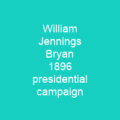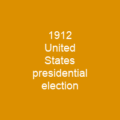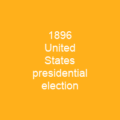The 1908 United States presidential election was the 31st quadrennial presidential election. Secretary of War and Republican Party nominee William Howard Taft defeated three-time Democratic nominee William Jennings Bryan. Taft won 51. 6% of the popular vote and carried most states outside of the Solid South.
About 1908 United States presidential election in brief

Bryan left the choice of vice-president to the delegates. John W. Kern from Indiana was unanimously declared the candidate for vice- president without a formal ballot after the names of Charles A. Towne, Archibald McNeil, and Clark Howell were withdrawn from consideration. Bryan ran a vigorous campaign against the nation’s business elite, but the Democrat suffered the worst loss of his three presidential campaigns. Bryan’s most formidable challenger was Minnesota Governor John Albert Johnson. Johnson’s rags-to-riches story, honesty, reformist credentials, and ability to win in a heavily Republican state made him popular within the Democratic Party. In March, the Minnesota Democratic State Convention endorsed Johnson for president. By the end of June, however, Bryan had amassed more than the requisite two-thirds of the delegates needed for nomination. Johnson, aware of the fact that Bryan’s nomination was a foregone conclusion, released his delegates, thereby allowing Bryan to win the nomination on the first ballot. Johnson was a former state senator and two-time gubernatorial candidate. In response to nomination of Bryan and Kern, the New York Times pointed out that the Democratic national ticket was consistent because the man twice defeated for the head of his state was at the tail of it.
You want to know more about 1908 United States presidential election?
This page is based on the article 1908 United States presidential election published in Wikipedia (as of Dec. 06, 2020) and was automatically summarized using artificial intelligence.







